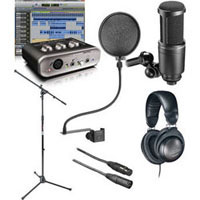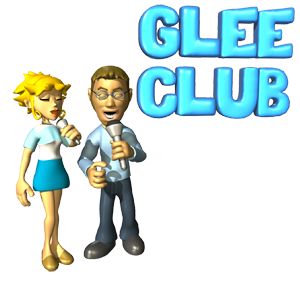
Below is another common question I pulled from Yahoo Answers. “What is the best home recording equipment package?” It isn’t a bad questions as far as it goes, but it’s a little like asking “what is the best car?” It depends very much on what you want the car to do for you, what your budget is, how important certain factors like maintenance requirements, fuel efficiency, etc. are to you.
So as usual, I have added my reply below, after the reply that came in to the original question.
Q: I would like to buy some home recording equipment (software, hardware, etc.), but I don’t know much about this stuff. Can anyone give me some guidance on what I should buy? Thank you!
A: When you say “best” do you mean cheapest? Or do you really mean “best? (I agree totally – K)
Cheap (~$175) but good: Tascam Track Pack T1 US122L Soundcard with Microphone Pack
Good but still far from the best: http://www.sweetwaveaudio.com/home_recording_package.php (and costs about $2,000).
If you really mean “best” then I hope you are prepared to spend a lot of money (maybe $500,000 or more).
My answer is to start with a question like this: “What do you want to do with your home studio?” If the answer is anything like “I want to do voice-overs,” or “I need to record audio for my podcast,” my answer would be to point the person in the direction of a MUCH less expensive set-up (at least to start) than either of the above suggestions. I’d probably suggest something like: “Get yourself a USB mic like the Samson Q1U Handheld USB Microphone
My next question would be: “How is your home recording knowledge?” If the person is a total newbie, my answer would definitely be the same as above, combined with advice to find some tutorials on the web designed to teach newbies how to record audio from home. Once good place like that would be this site – Home Brew Audio (just off the top of my head:)). However, if the person has some experience and knowledge already, I might add a few different items to the mix, such as downloading Reaper (by Cockos) for a 30-day trial of their excellent software that will eventually cost you a mere $60, if you make less than about $20,000 per year using it. If your audio work using Reaper makes you more than $20K a year, you probably won’t mind spending the $220. And these are the same software “versions.” BTW, I have no affiliation with Reaper. I just love and use their product.
If the person is wanting to record a rock band and put out a CD, well then things change quite a lot in that a few different kinds of mic will be needed, as well as the ability to record 6 or 8 (or more) tracks at the same time. I’d probably recommend something like the: Focusrite Clarett 8Pre that has 8 preamp inputs for about $800.
Of course there is a lot of middle-ground here as well. B&H Pro Audio asked me for advice on home recording equipment bundles and based on my input, set up two starter kits. One is geared (no pun intended:)) more toward the absolute beginner on a budget who expects to do mostly voice-over, podcast, video narration type stuff. It’s called the Fast Track Home Recording Starter Kit for just about $300.
So before you run out and ask your music store guy “what the best home recording studio equipment package” is, do yourself (and your bank account) a favor and ask someone who can help you match the gear you need to your budget and your recording goals.
HappyRecording!
Ken
